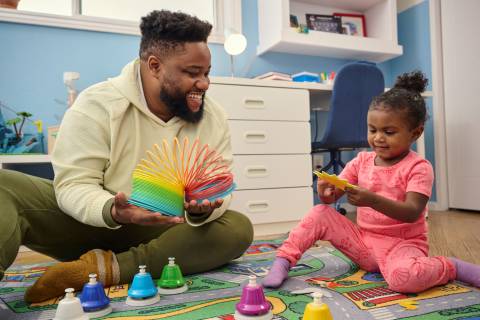For some caregivers, showing physical affection might not come naturally. If you're someone who finds it hard to express love through physical touch, you're not alone. You can ease into showing physical affection to your child to honor both your and your child’s needs.

Physical affection is more than just hugging. It includes a broad range of touch and connection. Some examples include:
Infants: Gentle touches, cuddling, holding, skin-to-skin contact
Babies: Rocking, patting on the back, gentle baby massage, light kisses on the cheek
Toddlers: Holding hands, playful tickles, sitting on your lap
Preschoolers: High-fives, shoulder rubs, gentle guiding touches
Physical affection is a great way to bond with your child. And it provides many other benefits too:
Reinforces a sense of security and trust
Supports children’s emotional well-being and self-esteem
Helps children develop healthy social relationships
Helps reduce stress and anxiety in children and caregivers
Increases feelings of happiness and satisfaction
Everyone's comfort level with physical affection is different, and it's OK if it takes time to find your own personal style. Just a few small expressions of physical affection each week can help you build your bond with your child. Over time, you might find that you become more comfortable showing physical affection to your child. If it’s helpful, try out these steps:
Start with non-physical affection: Sharing smiles, laughter, words of encouragement, and quality time together are all great ways to bond with your child. Starting with non-physical affection can help you become more comfortable with showing affection and provides a strong foundation to build on.
Progress gradually: When you’re ready, try starting out with light touches, such as a pat on the back or a touch on the arm. You can try doing an activity together like dancing that includes some small touches. Over time, work your way up to hugs, cuddling, and other forms of physical affection that feel comfortable for you and your child.
Create routines: Establish a daily routine of physical affection, such as a bedtime cuddle or a morning high-five, to help overcome discomfort or hesitation.
Communicate with your child: As they grow older, talk openly with your child about their preferences for physical affection, and adjust your approach accordingly.
If your hesitation with physical affection stems from a deeper issue, such as childhood trauma, consider seeking support from a mental health professional, who can help you address these concerns and develop a healthy approach towards physical affection in parenting.






